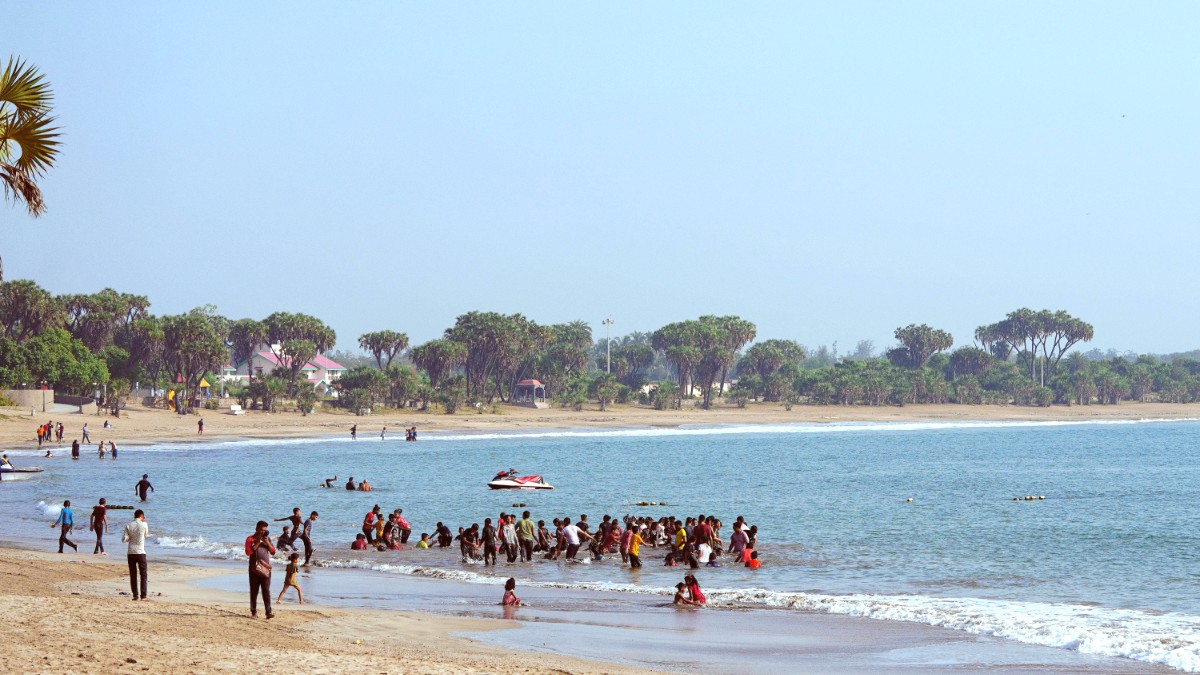
Gujarat, India
Massive Portuguese-built fort, 16th century. UNESCO nominee. Double moats, lighthouse, churches within walls. Allow 2-3 hours for exploration. Entry fee applies.
Natural labyrinthine rock formations. Unique light effects, popular for photography. Free entry. Visit during daylight. Wear comfortable shoes.
Small, picturesque sea fort. Accessible only by boat from Diu Fort jetty. Served as lighthouse and prison. Visit at high tide for dramatic appearance.
Historic Portuguese church (1601). Intricate Baroque architecture, rich wood carvings. Active church. Dress modestly. Free entry.
Housed in Old St. Thomas Church. Displays artifacts from Portuguese past: statues, sculptures. Open daily except Fridays. Nominal fee. Insights into colonial history.
Most famous, horseshoe shape, tranquil waters. Lined with hoka trees. Swimming, water sports (seasonal), camel/horse rides. Visit sunset for scenic views.
Largest, northernmost beach. Golden sands, quieter than Nagoa. Water sports. Accessible by road or ferry. Good alternative to busy Nagoa.
Smaller beach with a temple dedicated to Goddess Jallandhar.
Known for clean waters and a rock formation with a natural chakra.
Ancient Shiva temple in a sea cave. Five Shiva lingams bathed by waves at high tide. Unique spiritual experience. Check tide timings.
India's largest shell museum. Private collection by a retired merchant navy captain. Thousands of shells from around the world. Open daily. Nominal entry fee. A unique and quirky collection.
Explore St. Francis of Assisi Church and the former St. Thomas Church (Diu Museum). Each presents architectural and historical interest.
Old Portuguese jail (exterior viewing). Zampa Gateway: imposing structure with lions and fountain, a historical entrance and photo spot. Fudam Bird Sanctuary offers birdwatching in winter.
Beach Relaxation: tranquil beaches for sunbathing, swimming. Resort Spas: higher-end resorts (The Deltin Hotel, Azzaro Resorts & Spa) offer spa services. Yoga and Meditation: peaceful beaches for personal practice.
Diu presents a subdued nightlife. Bars and lounges within larger resorts and hotels. Relaxed atmosphere, drinks, sometimes live music. Beachside shacks might stay open late.
Diu is an excise-free zone. Alcohol is legally sold, unlike neighboring Gujarat. This shapes the evening entertainment options for visitors.
When exploring religious sites, dress modestly covering shoulders and knees. Photography may have restrictions. Always seek permission when photographing individuals.
Mainly in higher-end resorts like The Deltin Hotel. Multi-cuisine menus, refined ambiance, professional service.
Numerous options in Diu town and near Nagoa Beach. A mix of Gujarati, Punjabi (North Indian), South Indian, and Indian-Chinese cuisine.
Good for family meals or a relaxed dinner. Varying ambiances cater to different preferences.
Scattered throughout Diu town, especially near the main market and bus stand. These are the most economical options.
The main market in Diu town offers fresh produce and some street food stalls.
Limited. Indian-Chinese fusion cuisine is widely available. Authentic Western or other international cuisines might be scarce, mostly confined to resort menus.
India, and notably Gujarat, is very vegetarian-friendly. Most restaurants offer extensive vegetarian menus, making dining convenient for those avoiding meat.
For vegan choices, clarify that you need no dairy products (ghee, paneer, curd, milk). Many traditional Gujarati dishes are inherently vegan.
Awareness of specific allergens (like gluten) is increasing but not widespread among all eateries. Communicate clearly or carry a translation card explaining your dietary needs.
Always wash your hands thoroughly before and after meals. Many prefer eating traditional meals with their right hand, though spoons and forks are always available. It is customary to order several dishes and share them among your group, allowing everyone to sample a variety of flavors.